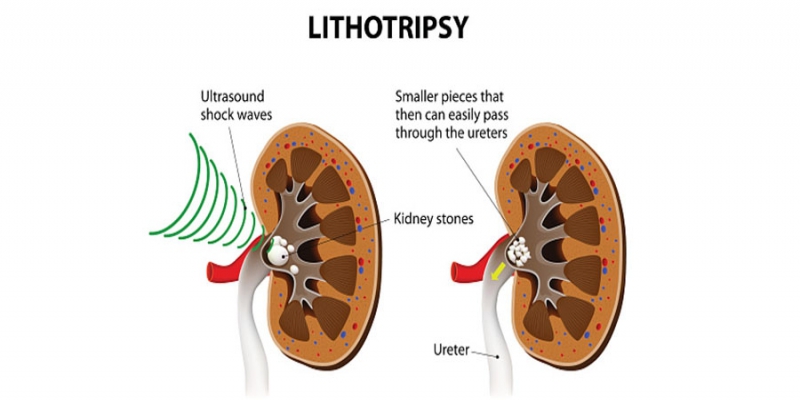Lithotripsy Treatment for Kidney Stone : Purpose, Procedure & Risks
2019-03-15 / RG STONE HOSPITAL / Urinary / Kidney Stone

What is Lithotripsy?
Lithotripsy is a medical procedure that is used to treat specific types of kidney stones.
This 30-90 minute non-invasive kidney stone treatment procedure can break the stones in the body into small fragments using shock waves.
The time taken in the procedure depends upon the composition and size of the stone.
This 30-90 minute non-invasive kidney stone treatment procedure can break the stones in the body into small fragments using shock waves.
The time taken in the procedure depends upon the composition and size of the stone.
This non-surgical technique breaks the stones into very tiny particles that are small enough to pass in the urine.
If any large crumbs remain, another treatment can be performed as this treatment is best for stone with size less than 2 cm, and has various other limitations too.
How does the process work?
Based on the working principle of the non-invasive process of Lithotripsy, there are different types of lithotripsy procedures named:
- Endoscopic lithotripsy
- Shockwave lithotripsy (SWL)
- Laser lithotripsy
- Percutaneous lithotripsy
- Extracorporeal shock wave lithotripsy (ESWL)
Depending on the patient’s diagnosis and assessment and the technique to be used, a local, regional or general anesthesia can be used that will help the patient to remain still and reduce the discomfort.
Is there any risk involved in Lithotripsy?
Though lithotripsy is a non-surgical procedure, there are still a few risk factors involved in the process. Some of these are:
- Pieces of stone can be left in the body that can be harmful in the future.
- Blockage of urine flow from the kidney.
- Bleeding in the kidney
- It may cause damage to surrounding tissues, muscles, skin, etc. due to shock waves.
- Signs of infection can also occur like severe pain, blood in urine, strong need to urinate, etc.
Discuss the Benefits of Lithotripsy
The best part of going through lithotripsy is that it can treat kidney and gall stones without any sort of incision.
As there is no incision, the patient is not required to stay for longer in the hospital and recovery time is faster than other methods that involve an incision.
It is just a 30-90 minutes procedure, and patients are relieved within 1-2 days of the procedure.
As there is no incision, the patient is not required to stay for longer in the hospital and recovery time is faster than other methods that involve an incision.
It is just a 30-90 minutes procedure, and patients are relieved within 1-2 days of the procedure.
Is Lithotripsy effective in all cases?
Since lithotripsy is best recommended for smaller sized stones, corrective procedures may be required to remove larger stone fragments.
ESWL cannot be performed in patients with bleeding disorders, obesity; and can fail too. Moreover, there are chances of other procedure.
ESWL cannot be performed in patients with bleeding disorders, obesity; and can fail too. Moreover, there are chances of other procedure.
Conclusion of Lithotripsy Procedure:
Lithotripsy is a very safe and effective treatment for kidney stones. It shows fast recovery and good results for those having smaller size of stones. Doctors at RG Stone hospital are expert in their job and offer the best services and care.
Categories
Hernia Repair
Appendicitis
Piles
Urological Treatment
Hernia treatment
Enlarged Prostate (BPH)
Gall Bladder Stone
Urinary / Kidney Stone
Vitamins
Indian Health Care System
Exercise
Obesity
Female Urinary Incontinence
Single Incision Laparoscopic Surgery (SILS)
Kidney Cancer
Bladder Cancer
Ovarian cancer

